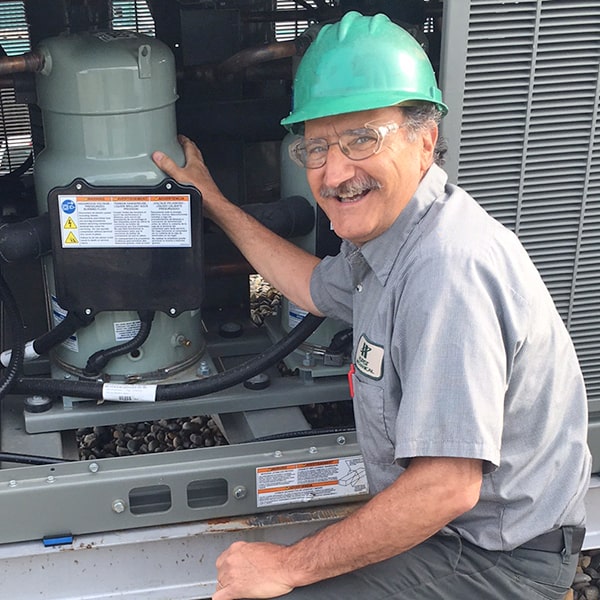Common Guidelines For Optimum Chiller Performance

- Maintain Equipment operating logs
- Logs should be filled out twice during each 8-hour shift
- Record pressures, temperatures, and other pertinent information to recognize performance
deviations
2. Follow proper compressor shutdown and startup routines.
- Follow manufacturer recommended shutdown procedures
- Components that may need attention are the compressor, compressor motor, control center, purge
unit, oil return system, cooler, condenser, starter, and water pumps - Follow OSHA lockout/ tagout regulations
3. Check chiller control center and starter for proper operation
- Proper electrical overload settings
- Chiller shuts off promptly due to excessive amperage
- Check all starter wire connections for loose contacts, obstructions, or pitting
- Electronic controls for motor current limit, overload, power fault interruption, and pre-rotation vane
control (centrifugal chillers) should be tested
4. Perform oil sampling and analysis
- Oil analysis provides unambiguous evidence of chiller condition
- High copper levels indicate tubing corrosion, or oil pump bearing wear
- HVAC manufacturers recommend annual oil sampling and filter inspection
5. Keep Refrigerant clean and charged
- Condenser and evaporator shells become subject to corrosion
- Rust can settle in condenser shell, mix with oil, and become sludge
- Sludge-covered tubes reduce heat-transfer efficiency, raising energy consumption
6. Eliminate Condenser tube scale
- Excess head pressure caused by scale makes the compressor work harder
- Mechanical brush cleaning of tubes is recommended if scale buildup is a problem
7. Maintain Condenser water flow rate
- Eliminate scale buildup in the condenser tubes
- Check valves for proper functioning
- Check for clogged nozzles in the cooling tower, dirty water strainers, air in the water piping
8. Eliminate excess air
- Review operating logs to determine refrigerant pressure
- Air must be purged because it increases head, forcing the compressor to work harder
- Check automatic purge unit for proper operation
9. Maintain Motor efficiency
- Motor must be kept clean and cool
- Motor improperly cooled if logs show increase in current draw without voltage increase
- Megohmmeter all leads, terminal lugs, and wire connections
- Bolts holding the motor in place should be tight
- Lubricate bearings
10. Test Heat-Exchanger tubes
- Outsource Eddy current testing and analysis

